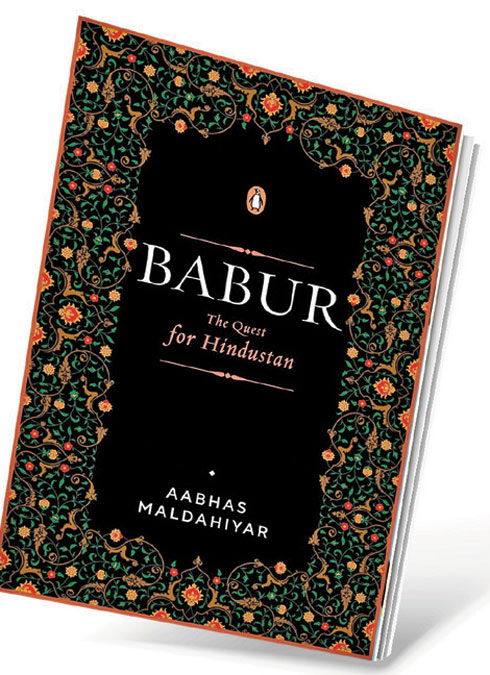Revisiting Babur


I WAS READING Aabhas Maldahiyar’s Babur: The Quest for Hindustan while travelling through western Uttar Pradesh. At a roadside restaurant, a passing waiter noticed the title of the book and remarked to someone (loud enough for me to overhear): “Why would anybody need to read a book to learn about Babur? I could tell you all about him.”
This is the general opinion today not just about Babur but pretty much the entire Mughal dynasty—never mind if most people cannot name any of the later Mughals besides Bahadur Shah ‘Zafar’. Thanks to popular culture and social media, everybody imagines they know all there is to be known about the Mughals, and that view is often highly romanticised, biased (at either end of the spectrum) and inaccurate. Babur, for one, has gone down in the general consciousness as not just ‘the invader’, but also the destroyer of Ram Janmabhoomi, the man who built the mosque named after him.
Maldahiyar, in his book, sets out to explore both who Babur was and how he went about conquering India, and also the possible truth behind the Babri Masjid. Following a long introduction (which asserts that all the Mughals remained loyal to their Central Asian roots and had no sense of the much-vaunted “Ganga-Jamuni tehzeeb”), Maldahiyar launches into a highly detailed translation—his own, from Persian—of Babur’s memoirs, the Babarnama. Using this as a basis, Maldahiyar builds an almost day-by-day account of Babur’s life and times, beginning in January 1519 and ending shortly after his death in 1530. This takes up about two-thirds of the book; the rest is devoted to unearthing the truth behind the Babri Masjid. Maldahiyar dives into old accounts, legal documents and reports, inscriptions, etc
Lost: The Unstoppable Decline of Congress
05 Dec 2025 - Vol 04 | Issue 50
Serial defeats | Leadership in denial | Power struggles
to prove his point: that Babur was actually not responsible for the destruction of Ram Janmabhoomi. This point was also the focus of a 2016 book, Ayodhya Revisited by IPS officer Kishore Kunal.
It’s obvious that Maldahiyar has put in a lot of hard work here. Translating the Babarnama, filling in the gaps by referring to other chronicles, citing other translators, delving into often-obscure records to discover the truth about the ill-famed Mir Baqi (supposed to have destroyed the Ayodhya Temple at Babur’s orders)—this is research that’s both deep and wide.
There are, however, flaws. The numerous typos, repetitions and other—some quite glaring—errors are irritating, and the tone of the book is uneven. The mystery of Mir Baqi and Ram Janmabhoomi is mostly examined in lucid language, but otherwise there is a tendency to slip into purple prose. More disturbing than the writing, though, is the author’s obvious prejudice. His aim is to expose “historians like Ram Puniyani [who] make loud claims for Babur being a tolerant king”, but in the process, Maldahiyar exposes his own biases. He ignores, for instance, the politics which overrode religious affiliations. He mentions Rana Sanga’s several Muslim allies but does not take this further—and, in stressing Babur’s ‘jihad’ against the Lodis, glosses over the fact that the Lodis were after all Afghans: Muslims. Among the authorities quoted are some (Niccolao Manucci is one) of questionable veracity.
Maldahiyar’s bias is further reflected in his often bombastic language.“…Babur’s dark proclamations, penned with the ink of treachery, were sent forth… Unfazed by the cries of the oppressed, Babur and his villainous cohorts pressed forth…’ Babur has “the cold pragmatism of a despot”, and is described as “predator”, “tyrant with [sic] whims of a sultan”, “orchestrator of chaos”, “cunning usurper” and more.
Had Maldahiyar made more of an attempt to be objective in his analysis, he might have made a better case. As it stands, this book tries to present a logical basis for its arguments, but lets its author’s inherent prejudice muddy the waters.
